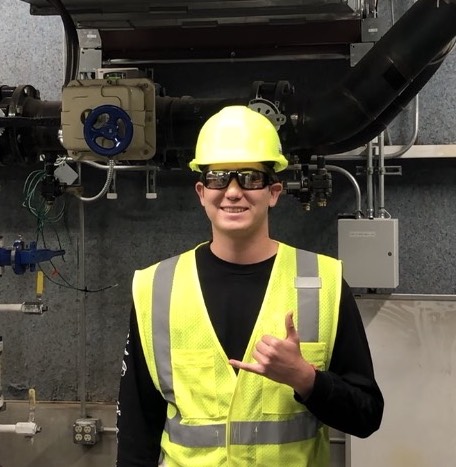
Erik Svetin was raised on the island of Moloka’i and graduated from Moloka’i High School in 2017. Currently, he just finished his first year at Syracuse University, studying Mechanical Engineering. He plans on earning a Bachelor’s of Science degree in four years and entering the field of robotics. Erik likes to build and design robots in his college robotics team. If he’s not in class, Erik likes to play basketball, hang out with friends, and volunteer within the community.
Home Island: Moloka’i
Institution when accepted: Syracuse University
Akamai Project: Field Testing the HVAC Fan Systems at the Daniel K. Inouye Solar Telescope
Project Site: Daniel K. Inouye Solar Telescope (DKIST)
Mentors: Brialyn Onodera and Chriselle Galapon
Project Abstract:
The heating, ventilation, and air conditioning (HVAC) systems at the Daniel K. Inouye Solar Telescope (DKIST) removes contaminants in the air and conditions indoor air, either cooling it or heating it to provide comfort. The HVAC fans at DKIST have been installed , however, they have not been field-tested. Field testing the fan systems is required to check that the fans are not malfunctioning and that they can perform to specifications. This project involved the field-testing and airflow verification in the four critical fans located in DKIST’s Utility Building and tunnel. After analyzing the fan and duct systems associated with each fan unit, the precise duct test-port locations were determined and installed in the appropriate positions using the Environmental Protection Agency’s Method 1. Prior to testing, a testing procedure was created to address proper safety measures, lock-out/tag-out procedures, and procedural activities as well as a data collection spreadsheet. The field-testing of the fan units involved gathering the flow velocity (ft/min) and static pressure (in H2O) data using an anemometer and a Fluke 922 airflow meter for each of the four fans. Using these results, the control volume of each fan was calculated. The control volumes and motor powers were then compared to the respective manufacturer’s submittal fan curves. The results of the fan field tests met the required margin of error of 5% or lower, which confirmed that each fan is functioning to DKIST requirements and met the airflow specifications. In the future, the fan systems shall be field tested for balancing the volume and pressure of the overall systems. Any modifications made to the fans shall also require additional fan testing. The testing procedure created for this project shall be used as a template for future fan testing at DKIST.